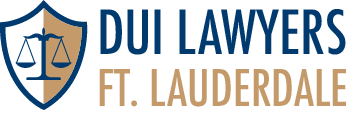Use Of Deepfake Technology In Fraud
Advances in artificial intelligence have introduced a new layer of concern in fraud-related crimes, particularly with the growing use of deepfake technology. Deepfakes refer to manipulated audio or video content created to mimic real individuals in ways that appear convincing as a fraud lawyer can explain. While this technology has creative uses in entertainment and media, it also presents new challenges in the legal system when used for fraudulent purposes.
How Deepfakes Are Used In Financial Deception
In recent years, fraud schemes involving deepfakes have become more sophisticated. Criminals have used video or audio impersonations of CEOs and other executives to authorize fake wire transfers or instruct employees to share sensitive company data. In some cases, these manipulations have led to significant financial losses before the fraud was detected.
Unlike traditional forms of fraud, deepfakes can deceive both human observers and digital verification systems. That creates risks not only for victims but also for individuals wrongly accused of creating or distributing the content. A deepfake can involve a video that shows the CEO saying a person’s name and asking them to complete a task, or it could even be a phone call that sounds like the CEO.
Legal Risks For Those Accused
Deepfake fraud cases often result in criminal investigations, particularly if they involve financial transactions, stolen data, or impersonation of public figures. Charges may include wire fraud, identity theft, and conspiracy, depending on the nature of the scheme.
For the accused, the legal defense may hinge on the ability to prove lack of intent or involvement. In some situations, individuals may unknowingly participate by sharing manipulated content created by others. A criminal defense lawyer may focus on digital evidence, chain of custody, and metadata to demonstrate that the accused did not originate or control the fraudulent media. Multiple parties may be held accountable for distribution of false information, so it is very important to always double check the information on your end before sending it to someone else.
Challenges In Evidence And Authentication
The legal system has traditionally relied on audio and video evidence as strong indicators of truth. With deepfakes, courts must now evaluate whether content can be trusted and who is responsible for its creation. Digital forensics can help verify whether a video or recording is authentic, but even these methods can be challenged as deepfake technology improves.
For both prosecution and defense, authentication of media is becoming a more technical and necessary process. Determining the original source of a deepfake and linking it to a defendant requires specific documentation and digital tracking. Cases involving shared devices, cloud storage, or anonymous platforms introduce further issues with attribution. This can be a very complicated process, which is why working with an attorney is so important.
Prevention And Legal Preparation
Businesses and public figures are now adopting safeguards to prevent deepfake misuse, including stricter protocols for approving transactions and verifying communications. Law firms are also seeing an increase in clients facing allegations linked to fraudulent media.
Attorneys like those at Becker Legal can attest that deepfake-related fraud is no longer theoretical: it is real, actionable, and highly disruptive. Individuals accused of such crimes may face significant reputational damage in addition to legal consequences.
If you or someone you know is under investigation for misuse of synthetic media or fraud involving impersonation, speaking with a lawyer experienced in digital evidence is critical. With a proper legal strategy and careful analysis, it may be possible to challenge false allegations or reduce the scope of liability.

